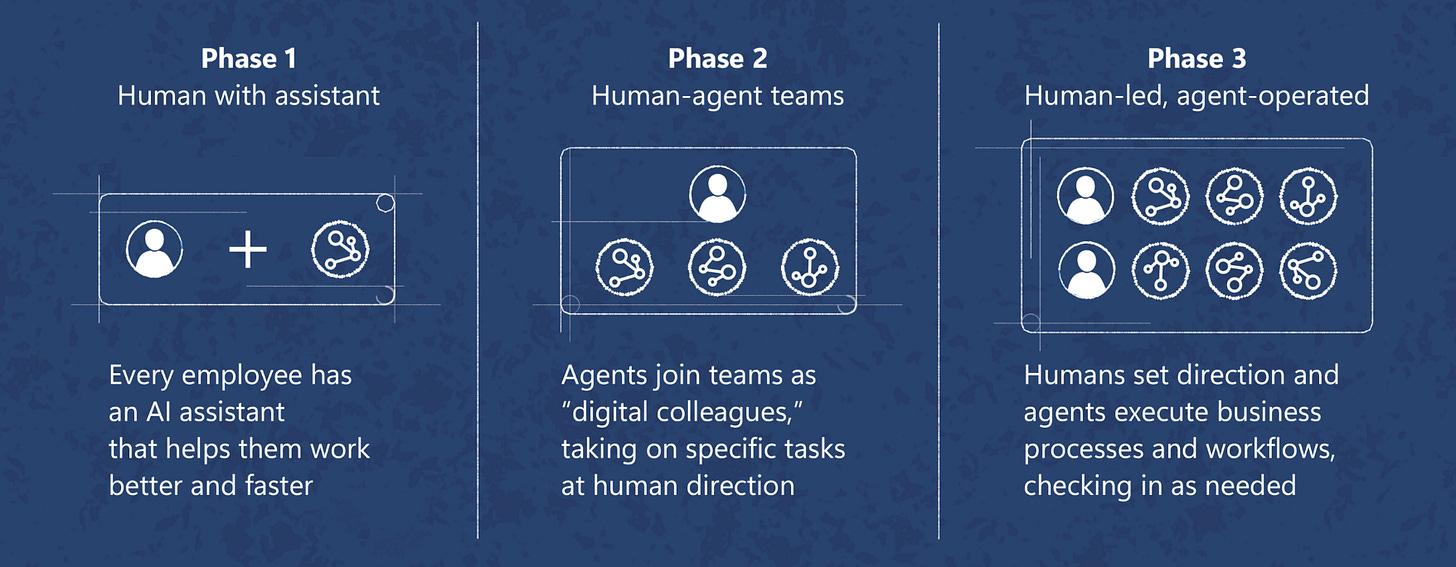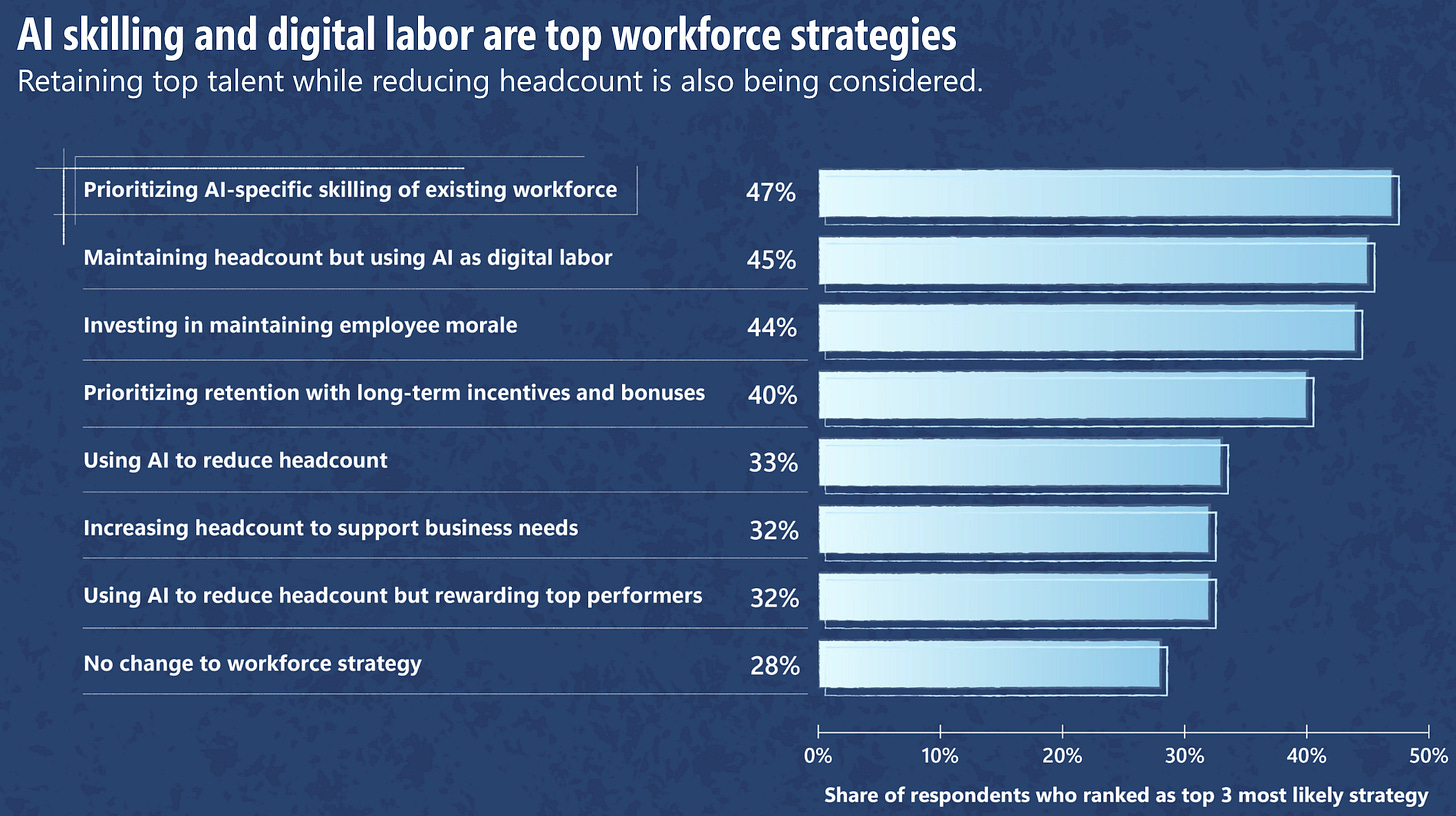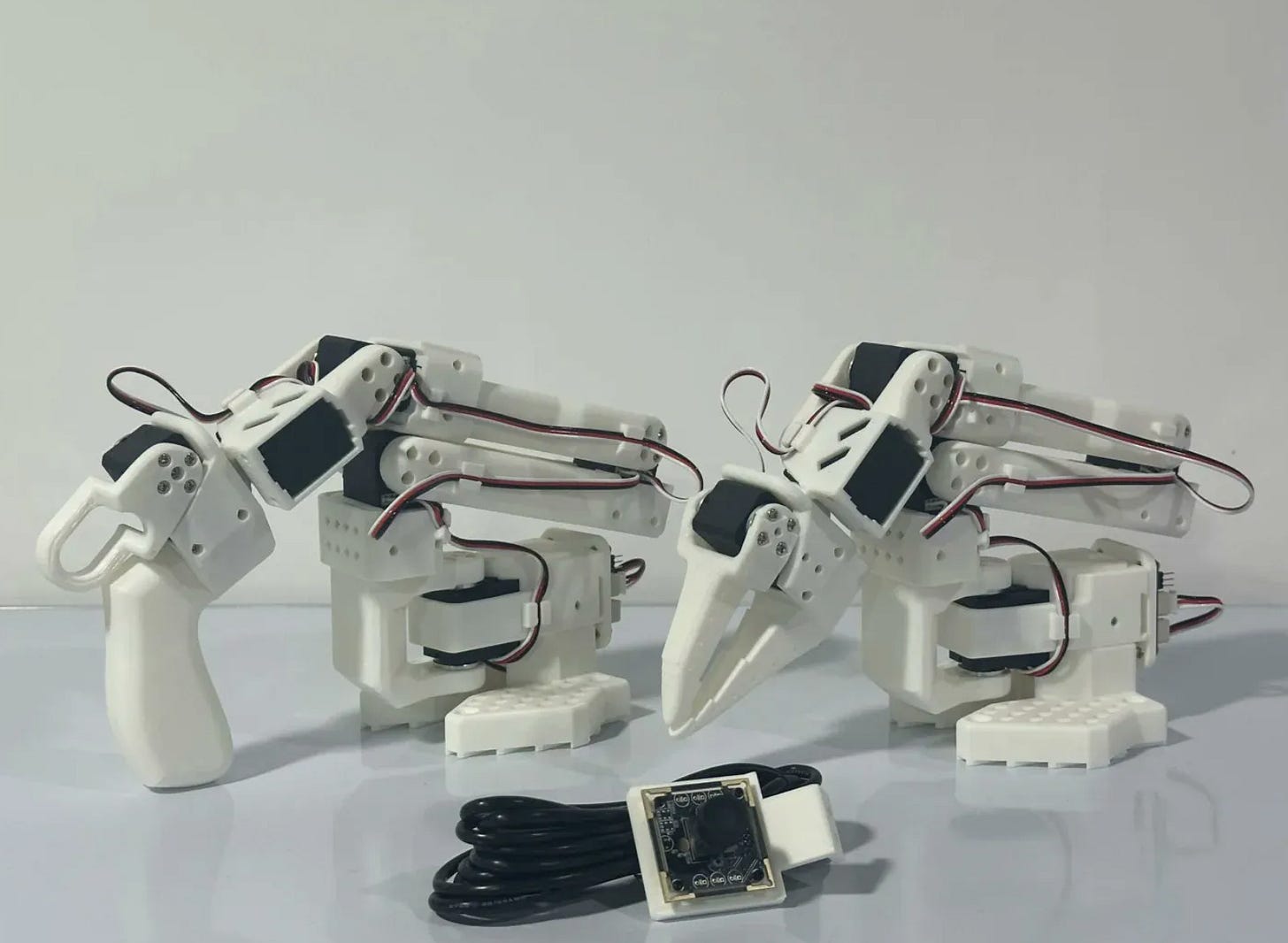TWS #005: Intel's next chapter, Huawei's AI chips, Stripe's Stablecoin Bet, The Frontier Firm,'The New Founder'...
and much more!
Welcome to the 86 new folks who subscribed from last week. Join 1,672 curious minds who, every week, get the latest curated high signals on news, insights, and ideas around technology, science, and business to help you become a better builder, thinker, and leader. You’ll also get an essay or a deep dive every other week.
Did you know...
In 1997, Apple was actually on the edge of bankruptcy, with shrinking market share and a stock price under $7. At the Macworld Expo in Boston, Steve Jobs, recently returned as interim CEO, announced a lifeline: Microsoft, Apple’s biggest rival, would invest $150 million in non-voting Apple stock. Bill Gates, confirmed Microsoft’s commitment to continue developing Microsoft Office and Internet Explorer for Mac, ensuring Apple’s platform remained viable for software users. The deal wasn’t just financial—it included a patent cross-licensing agreement, settling disputes and giving Apple access to Microsoft’s technologies. This cash infusion stabilized Apple, bought time for Jobs to streamline operations, and signaled to everyone that Apple was worth saving. Within a year, Apple launched the iMac, kickstarting its huge turnaround. By 2007, Apple’s market cap surpassed Microsoft’s. The investment wasn’t charity because Gates saw value in keeping Apple alive to avoid antitrust scrutiny over Windows’ dominance and to maintain a competitive software market.
Here’s this week’s scoop:
Intel’s next chapter
Huawei is taking it up a notch against Nvidia
Stripe’s huge stablecoin bet
Understanding the “Frontier Firm”
The New Founder: How to use Amazon’s PRFAQ framework
and much more…
Let’s dive in.
🔥 Nuggets for the Road
GPU Price Tracker — a real-time dashboard to show the demand and supply for GPU accelerators. Nvidia A100s are currently going for $8K a pop. [LINK]
Watching OpenAI’s o3 guess a photo’s location is surreal, dystopian, and wildly entertaining (move over Rainbolt) [LINK]
Inside arXiv—the Most Transformative Platform in All of Science [LINK]
The secret behind Temu’s rock-bottom prices [LINK]
No, you’re not fine just the way you are: time to quit your pointless job, become morally ambitious and change the world [LINK]
Scientists Scanned the Brains of Authoritarians and Found Something Weird [LINK]
How Japan has taken imports and changed them into something else entirely [LINK]
The Profound Perspective of the Pale Blue Dot — What do we learn about human significance? [LINK]
📡 The Signal
Intel’s Next Chapter
Intel’s new CEO, Lip-Bu Tan, is making some big changes. There is now an emphasis on a return to Intel's core engineering strengths, combined with a drive for operational efficiency. The core vision is now streamlining operations, reducing organizational layers, and empowering the company's engineers to foster innovation. This is a return to what Intel does best: chip design and manufacturing, as it’s a recognition that technological leadership is paramount in this industry. Intel is implementing significant cost-cutting measures, reducing its operating expenses and mandating a return-to-office four days per week. It’s clear Intel has been on struggle street for a long time as it failed to ride the AI wave with the likes of Nvidia, AMD, and others taking the lead, but also poor management decisions around its foundry business with TSMC (a competitor) offering to lend a hand. We’ll see how this pans out. [LINK]
Here are some of their priorities:
“Start building best-in-class products again”
“A holistic approach to redefine our portfolio to optimize our products for new and emerging AI workloads”
“Refine our AI strategy with a focus on emerging areas of interest”
“Our goal will be to enable the next wave of computing defined by reasoning models, agentic AI, and physical AI”
“We need to build trust with foundry customers”
“Learn to delight our customers by building wafers that meet their required power, performance area, and on-time schedule”
“Our business is capital intensive and we have important investment to make at the time when our financial performance is not where it needs to be. This means we need to be prudent with capital.”
Huawei's Bold Move Against Nvidia
China's Huawei is making huge strides in developing its own advanced AI chips, aiming to rival the performance of Nvidia, the current dominant player in this critical market. This development is particularly timely against everything that’s happening with ongoing geopolitical tensions and US sanctions that have limited Huawei's access to cutting-edge semiconductor tech. The ability of Huawei to engineer and potentially manufacture competitive AI accelerators (which could surpass Nvidia’s H100s) would represent a major technological leap for the company and could fundamentally change the dynamics of the global AI hardware landscape. Increased competition in this space also creates further innovation and can lead to more accessible and potentially lower-cost AI solutions for businesses and consumers. Huawei is currently in talks with a number of Chinese AI companies looking to test their chips. [LINK, IE]
Stripe's Huge Stablecoin Bet
Stripe is reportedly testing a new project involving stablecoins. Last year, it quietly acquired a company called Bridge ($1.1B), which wanted to become the Stripe for stablecoins. This move signals the growing recognition and adoption of stablecoins as a viable form of digital currency. Stablecoins, which are cryptocurrencies designed to maintain a stable value relative to a traditional currency or other asset, offer the potential benefits of blockchain technology, such as faster and cheaper transactions, with the price stability that is often lacking in more volatile cryptocurrencies (like ETH and BTC). Stripe's entry into the stablecoin market could accelerate mainstream adoption, making them more accessible and user-friendly for everyday payments. This could hint at a future where digital currencies play more of a role. The reported $3.7 trillion market looming for stablecoins just shows the potential for growth in this area. [LINK]
Microsoft’s Work Trend Index: The Dawn of the Frontier Firm
A "frontier firm" is a new type of organization that is adapting to the rapid changes driven by technological advancements (especially AI), shifting employee expectations, and evolving societal norms. With intelligence so easy to access now, businesses are scrambling to figure out how to reshape their org structures to adapt to both AI and the productivity and needs of the business. There’s a strong sense that the less “frontier” you are, the more likely you’ll have to work harder to catch up with your competitors. AI agents are becoming the norm now, and there’s going to be a huge shift where the human workforce will have to work alongside these 24/7 workhorses. It’s a well put-together report. [LINK]
Understanding Europe's Recent Power Outage
Following the recent power outage affecting Spain, Portugal, and parts of France, there’s an investigation into figuring out its cause. As societies become increasingly reliant on electricity for all aspects of daily life, ensuring the resilience and security of power grids becomes really critical. The integration of renewable energy sources also complicates grid management, requiring sophisticated technologies and international cooperation to maintain a stable and reliable energy supply. [NYT, THE CONVERSATION]
Is AI Making Us Stupider?
AI is becoming increasingly capable of performing tasks that require critical thinking, problem-solving, and even basic recall – from writing emails and debugging code to answering complex questions, humans may become less inclined to exercise these mental muscles themselves. This over-reliance could lead to a sort of cognitive atrophy, making people less capable when they don't have AI assistance readily available, or even reducing the depth of understanding by struggling with difficult problems. [LINK]
Hugging Face's Accessible Robotic Arm
If you haven’t heard of these guys, you should check them out—they’re like the GitHub of machine learning. Originally a purely software company, they’re now venturing into hardware with the release of a 3D-printed robotic arm ($100!). This is potentially a big moment for democratizing robotics, much like the open-source movement did for software and platforms like Arduino and Raspberry Pi did for electronics and computing. By offering a low-cost, open-source hardware platform, Hugging Face is lowering the barrier to entry for developers, hobbyists, researchers, and potentially even small businesses to experiment with physical AI. [LINK]
🧐 Trivia of the Week
Last week’s question: What tech did Walmart use in the 1980s to revolutionize Its Supply Chain, becoming a retail giant?
Answer: Satellite comms for inventory. In the 1980s, Walmart began implementing its own private satellite network ($24M) and the Retail Link system (database that displayed real-time sales data from cash registers directly to distribution centers), which facilitated real-time data sharing between stores, distribution centers, and suppliers. This allowed for more accurate inventory forecasting, improved collaboration, and reduced costs. It also enabled Walmart to reduce supply chain costs by working directly with manufacturers, cutting out unnecessary intermediaries.
This week’s trivia:
The answer will be provided in next week’s newsletter.
📝 The New Founder: How to Use Amazon's Powerful PRFAQ Framework For Anything! | Marcelo Calbucci
This is the first of what I hope to be many in a series of posts to help founders and operators become better builders. While there are many outlets for founder and entrepreneurial advice, there aren’t many geared towards providing real-world tactical experience, especially at the very early stages. This is why we created the ‘The New Founder’ section of the newsletter. Its main goal is to provide high-quality insights into what it takes to get your first customer, build your product, integrate AI into your workflows, raise money (if that’s what you want), hire the right people, and so many other areas.
To that end, today, I’m beyond excited to share this tactical post with all of you on PRFAQ by Marcelo Calbucci—with origins at Amazon, it’s becoming much more mainstream and for good reason. It’s a powerful tool that’s changing the way organizations build products.
The PRFAQ framework isn’t just about writing a document—it’s a type of mindset that aligns teams, reduces risks, and empowers everyone, from junior engineers to seasoned leaders, to think strategically. It doesn’t matter if you’re launching a startup, driving change in a large org, or even tackling a personal project; this article will equip you with actionable steps to clarify your vision, engage stakeholders, and make smarter decisions.
Marcelo Calbucci, a seasoned operator and founder with roots at Microsoft (Development Manager), Amazon (Director of Product & Tech), and multiple startups (Hiya, etc.), generously unpacks the method that’s driven success at one of the world’s most influential companies.
READ FULL POST BELOW 👇
🙏🏼 Connect with Me
Are you new to the newsletter? Subscribe Here
Check out my YouTube channel (and subscribe!)
If you’re a founder, apply here (Metagrove Ventures) for startup funding or contact me directly at barry@metagrove.vc
If you think this could be helpful and informative to others, please share it :)
Thanks for reading.
Barry.









